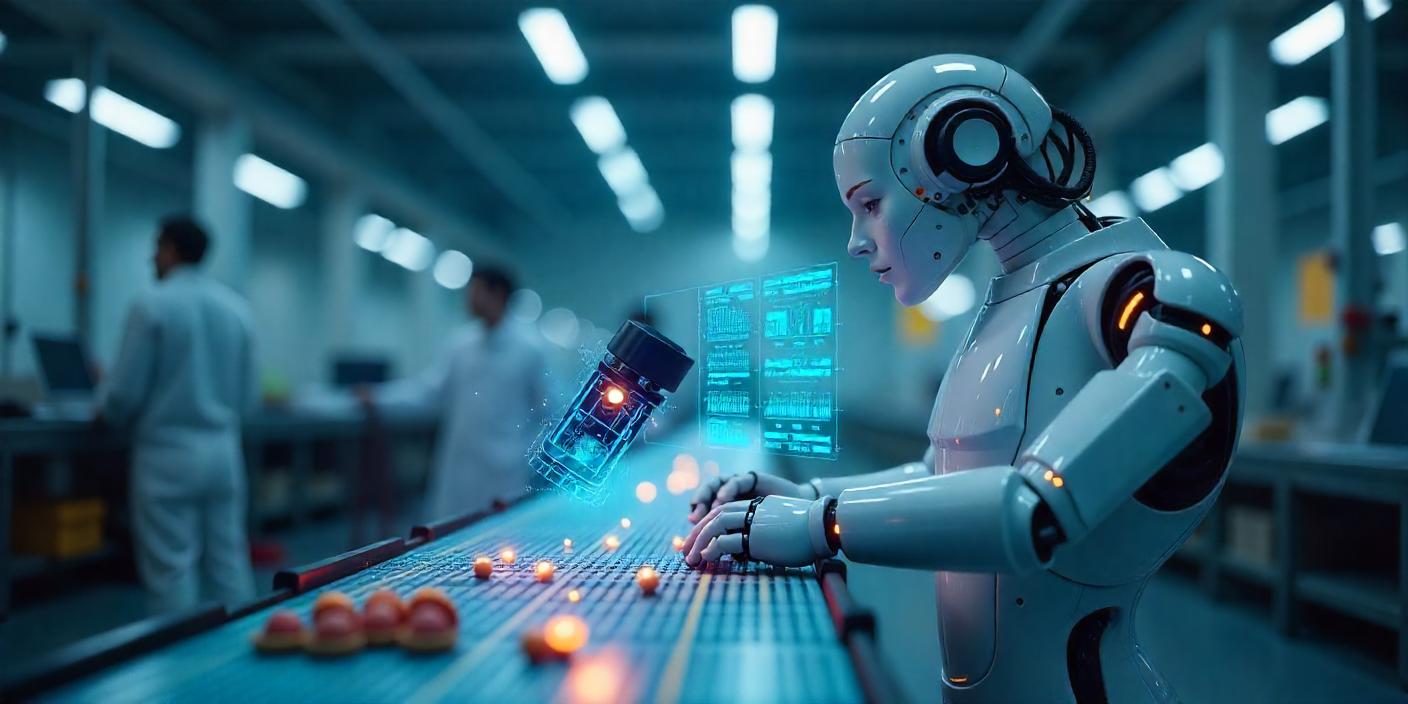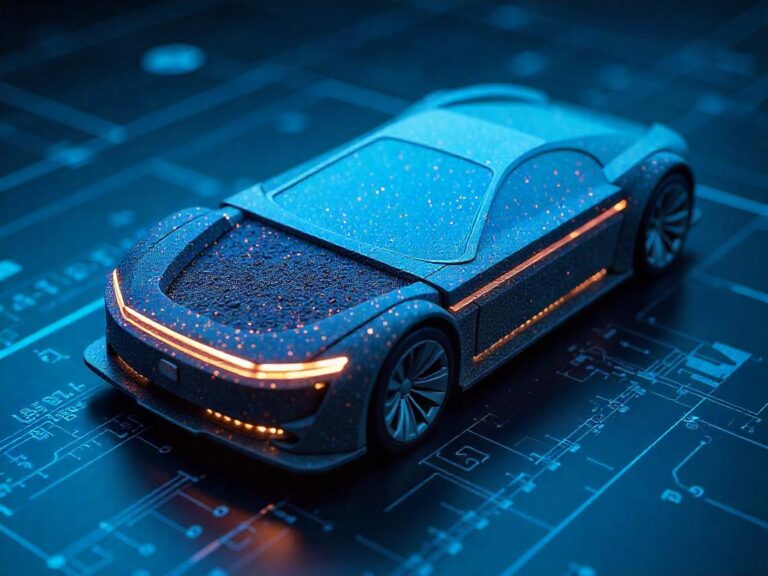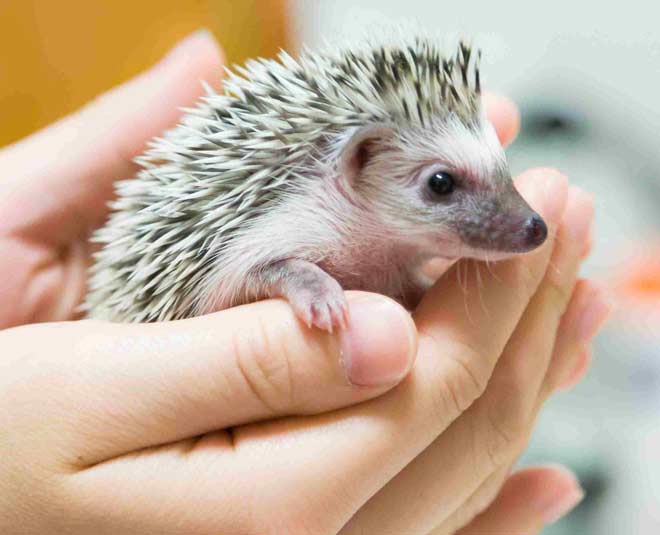
In today’s Industry 4.0 era, collaborative robots—or cobots—are no longer limited to simple pick-and-place tasks. Thanks to advances in artificial intelligence and computer vision, these cobots are now capable of seeing, understanding, and adapting to their environments in ways that were once exclusive to human operators.
The integration of AI-powered vision systems into cobots marks a major leap forward in smart factory automation—enabling greater precision, flexibility, and safety than ever before.
Let’s explore how these vision-enhanced cobots work, why they’re a game-changer in industrial settings, and what their future holds in the world of intelligent manufacturing.
🔍 What Are Cobot Vision Systems?
Traditional robots function on pre-programmed instructions and are usually confined to controlled, repetitive environments. They rely on external sensors, often with limited perception capabilities. However, cobots with AI-powered vision systems have access to built-in cameras, LiDAR, depth sensors, and more, enhanced by machine learning algorithms.
These vision systems allow cobots to:
- Recognize and classify objects in real time
- Detect and adapt to changes in environment
- Interpret human gestures or commands
- Perform quality control through visual inspection
- Navigate dynamic workspaces autonomously
🤖 How AI Elevates Vision in Cobots
At the heart of these systems lies computer vision (CV) combined with deep learning (DL). Here’s how it works:
📸 1. Image Capture
High-resolution cameras (2D/3D) or LiDAR sensors collect visual data from the cobot’s environment.
🧠 2. AI Processing
Convolutional Neural Networks (CNNs), object detection models (YOLO, Detectron2), or semantic segmentation algorithms analyze the data to:
- Recognize objects or patterns
- Understand positions, orientation, or motion
- Differentiate between normal and defective items
🔄 3. Real-Time Decision Making
The cobot uses this information to make intelligent decisions on the fly — adjusting grip, reorienting objects, or avoiding collisions.
🏭 Real-World Applications in Smart Factories
AI-powered vision transforms cobots from basic tools into intelligent assistants. Here are some key use cases:
✅ 1. Precision Assembly
Cobots can identify tiny components, align them perfectly, and even perform delicate insertions with human-like accuracy—essential for electronics, automotive, and aerospace industries.
✅ 2. Visual Quality Inspection
Vision-enabled cobots can detect:
- Surface defects
- Color inconsistencies
- Alignment errors
- Missing components
With AI, they learn to improve over time, flagging issues that human eyes might miss, ensuring higher product quality with fewer rejects.
✅ 3. Bin Picking and Object Sorting
Using 3D vision and AI, cobots can identify and grasp irregular, overlapping, or randomly oriented objects from bins. They adapt to non-uniform items, unlike traditional rigid automation.
✅ 4. Human Interaction Recognition
Cobots use AI vision to detect human presence, interpret gestures, or respond to voice cues, making them more collaborative and safer on the factory floor.
✅ 5. Dynamic Task Adaptation
If a part shifts or a machine changes its cycle, vision-enabled cobots adapt their actions in real time, improving flexibility and reducing downtime.
🔧 Hardware and Software Stack
Popular Vision Hardware:
- Intel RealSense (depth sensing)
- Zivid 3D cameras
- Basler machine vision cameras
- LiDAR for spatial awareness
AI Software & Frameworks:
- YOLOv8 for object detection
- OpenCV for image processing
- TensorFlow / PyTorch for deep learning
- NVIDIA Jetson / Coral TPU for edge AI acceleration
⚖️ Benefits of AI-Powered Cobot Vision
| Benefit | Impact |
|---|---|
| 🎯 Increased Accuracy | Reduces human error in critical tasks |
| ⚡ Faster Throughput | Real-time decisions enhance productivity |
| 🧠 Adaptive Learning | Cobots improve with every task |
| 💡 Greater Flexibility | Easily reprogrammed for different products |
| 👷 Enhanced Safety | Visual systems detect humans, reducing accidents |
⚠️ Challenges and Considerations
While powerful, these systems come with challenges:
- Lighting and environmental sensitivity
- High initial cost of advanced cameras and processors
- Training data requirements for AI models
- Need for real-time processing on edge devices
- Cybersecurity risks in connected systems
🔮 The Future of Cobot Vision
The field is advancing rapidly. Here’s what’s on the horizon:
- Self-supervised learning: Cobots that learn new tasks without large labeled datasets.
- Multimodal AI: Combining vision with audio, text, and sensor data for richer understanding.
- 4D Vision: Incorporating temporal depth (time-based spatial reasoning) for advanced motion prediction.
- Generative AI + Vision: Vision-powered cobots that plan tasks based on image-based instructions or CAD designs.
🔮 The Future of Cobot Vision
The field is advancing rapidly. Here’s what’s on the horizon:
- Self-supervised learning: Cobots that learn new tasks without large labeled datasets.
- Multimodal AI: Combining vision with audio, text, and sensor data for richer understanding.
- 4D Vision: Incorporating temporal depth (time-based spatial reasoning) for advanced motion prediction.
- Generative AI + Vision: Vision-powered cobots that plan tasks based on image-based instructions or CAD designs.





